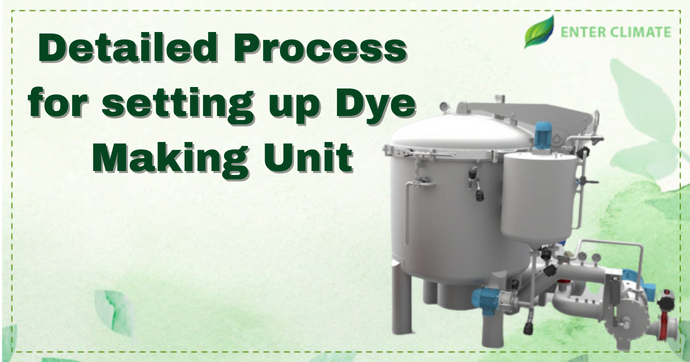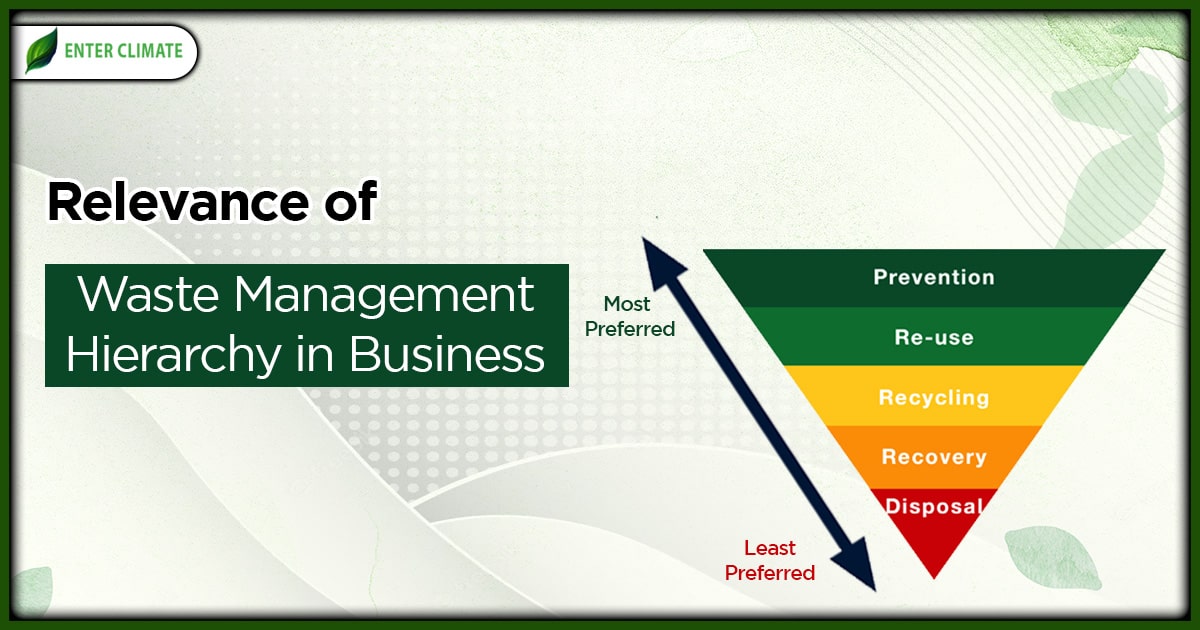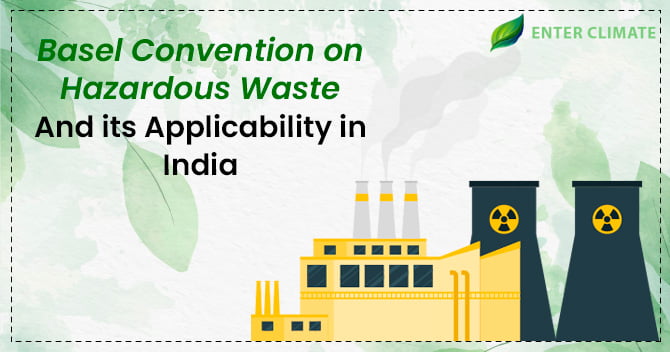Detailed Process for setting up Dye Making Unit
 03 Oct, 2022
03 Oct, 2022 
Dye is the natural or synthetic substance extracted from chemicals or plants and mixed with the liquid used to change the colour of hair or cloth. Dyes have many uses, including textiles, wood, painting paper, leather, bamboo, candles, wood, etc. Their properties include resistance to sunlight, fastness to light, ease of application, durability of the colour and resistance to various chemicals, water, diluted acids, organic solvent and various alkalis.
Market Overview of Dye Making Unit
The international market of dye making is mainly driven by significant growth in the textile industry. Moreover, the rising demand for reactive dyes for tinting textiles, as they are composed of highly coloured organic substances and have a high resistance to fading, is propelling the market growth. According to a market research report, the dye making market is estimated to be worth over 29,000 Billion Us Dollars in 2021, with the projected Compound Annual Growth Rate (CAGR) of more than 4.5 per cent during the analysed period of 2022-2027.
According to a report by the FICCI (Federation of Indian Chambers of Commerce and Industry), the industries related to chemical manufacturing in India have a market size of nearly 163 Billion US Dollars. Furthermore, the dye making unit industries are expected to grow with a CAGR of 9 per cent over the next five years. As per a recent study, the Indian dyes market is estimated to generate an income of Rs. 48,000 crores by 2022. Currently, India contributes around 6 per cent share of the international market with a CAGR of more than 15 per cent.
Apart from this, the exporting market of the Indian Dye Making Unit is also increasing, now exporting dye to Turkey, Bangladesh, the USA, China as well as Germany.
| S.No. | Countries (importing from India) | Total Percentage |
| 1 | United States of India | 8.0 per cent |
| 2 | Turkey | 7.1 per cent |
| 3 | Bangladesh | 6.0 per cent |
| 4 | China | 5.7 per cent |
| 5 | Germany | 4.6 per cent |
| 6 | Italy | 4.3 per cent |
| 7 | Brazil | 3.9 per cent |
| 8 | Indonesia | 3.7 per cent |
| 9 | Singapore | 3.3 per cent |
| 10 | Others | 49.4 per cent |
Classification of dyes produced in dye making unit
There are many types of dyes available. Dyes produced in dye making unit are divided into various categories like: –
- Process: – Reactive Dye, Vat Dye, Disperse Dye, Acid Dye, Sulphur Dye, Direct Dye, Cationic Dye, etc.
- Form: –Synthetic Dye, Natural Dye
- Type: – Cyanide Dyes, Azide Dyes, Anthraquinone Dyes, Nitroso Dyes, etc.
Areas of application of dyes
There are a plethora of areas of application of dyes. Produced in the dye making unit, these find uses in the textile industry as mentioned below –
| Group | Application |
| Acid | Wood, paper, silk, leather, synthetic fibres |
| Disperse dyes | Synthetic fibres |
| Azoic | Printing inks and pigments |
| Sulfur | Cellulosic fibres and cotton |
| Reactive | Cellulosic fibres and cotton |
| Vat dyes | Cellulosic, cotton and blended fibres |
| Basic | Silk, wood, cotton |
| Organic pigments | Cotton, cellulosic, blended fabric and paper |
| Direct | Cotton, cellulosic and blended fibres |
Environmental impact of Dye Making Unit
Dye making units produce a large amount of wastewater during the manufacturing process. This wastewater contains both organic and inorganic compounds. Moreover, the dye also consumes and produces a large quantity of untreated wastewater containing chemicals primarily non-biodegradable, carcinogenic, or both.
In these effluents, some of the heavy metals such as chromium (Cr), arsenic (As), copper (Cu), and zinc (Zn)are also traced. These elements are capable of causing severe health issues, including haemorrhage, nausea, skin ulcer, skin irritation and dermatitis.
Some trace metals such as Cr, As, Cu and Zn are present in these effluents and are capable of causing several health problems, including haemorrhage, ulceration of skin, nausea, severe irritation of skin and dermatitis. Some trace metals such as Cr, As, Cu and Zn are present in these effluents and are capable of causing several health problems, including haemorrhage, ulceration of the skin, nausea, severe irritation of skin and dermatitis.
Environmental compliances followed by the dye making unit
Apart from acquiring the general licenses and authorisation, dye making unit also has to abide by the environmental compliances regulated by the Ministry of Environment, Forest and Climate Change (MoEF&CC)[1]. These units have to obtain the following certificates and licences –
Consent Certificates
CTE or Consent to Establish is acquired by the dye-making unit’s owner before the manufacturing business is established.
CTO (Consent to Operate) is acquired after the manufacturing business is established and is ready to operate.
The authorisation/certification process for consent certificates is prescribed under the Air and Water (Prevention & Control of Pollution) Act. Moreover, the certification process for both consent certificates is partially the same, where the authorisation form is submitted via the online portal of the concerned UT PCC/the SPCB with the required documents. These are then reviewed. In the case of Consent to Operate, a government official of state authorities conducts a site inspection and makes the report accordingly. According to the inspection report, the consent certificate is granted.
Documents required for Consent to Establish
For acquiring CTE from the SPCB/PCC for dye making unit, the business owner has to submit the following documents: –
- Land attainment documents, including sale deed or registration/lease
- The detailed project report is mandataory for CTE for dye making unit. The report contains a financial breakdown related to pollution control measures, break up of land used, industrial process, control equipment relating to air pollution, flow chart of the procedure, and details for Effluent Treatment Plant (ETP), Solid Waste Management (SWM), and production of wastewater.
- Layout/Site plan
- GST certificate
- Aadhaar card
- Copy of self-declaration form for Restriction of Hazardous Substance (RoHS)
Documents required under Consent to Operate
According to the Air and WaterActs, for acquiring a CTO for dye making unit, the business owner has to submit the following documents –
- Rule 14 of the Environmental (Protection) Act, 1986 mandated Form V
- Electricity bill
- Water bill
- Ownership proof, including rent agreement/lease agreement
- Site plan/layout
- PAN card
- Aadhaar card
- Municipality/Industry license for trading business
- Consent to Establish
- Authorisation letter
- Health Trade License
- CA letter on the financial breakup
- Goods and Services Tax certificate
- Trade License
- Proof of registration under Companies Act/LLP Act
Hazardous Waste Authorisation
The registration relating to the establishment or transboundary or cross-country movement of hazardous waste is regulated under the Hazardous Wastes (Management, Handling and Transboundary Movement) Rules, 2015. For hazardous waste authorisation, the dye-making unit’s owner must apply under Form 1 to the concerned SPCB.
Documents required for Hazardous Waste Authorisation for Dye Making Unit
The documents that are to be submitted mandatorily while applying for Hazardous Waste Authorisation are: –
- Consent to Operate (CTO)
- Consent To Establish (CTE)
- Certificate of incorporation (CIN)/LLP
- MOA (Memorandum Of Association)
- Board resolution for appointing an authorised person
- AOA (Article of Association)
- Aadhaar card
- Layout plans
- PAN copy
- GST certificate of business
- Factory/Trade license
- Rent/proof of ownership
General Business Setup Licenses
Before acquiring and compiling environmental authorisation, the Dye Making Unit has to acquire general licenses from the concerned governmental authorities. Some of these licenses are: –
Company license
Documents required for establishing the company
- PAN card
- Address proof such as
- Passport
- Election or Voter Identity card
- Ration card
- Driving license
- Electricity bill
- Telephone bill
- Aadhaar card
- Residential proof such as
- Bank statement
- Electricity bill
- Telephone bill
- Mobile bill
- GST Registration Certificate
- MOA (Memorandum of Association)
- AOA (Article of Association)
Udyam MSME Registration
MSME (Micro, Small and Medium Enterprise) registration requires the owner of the Dye Making Unit to apply through the online portal of the regulating authority. The nodal authority, in this case, is the Ministry of Micro, Small and Medium Enterprise. After applying, the owner must upload the mandated documents.
Documents needed for Micro, Small and Medium EnterpriseRegistration
- Applicant’sofficial name
- Name and type of enterprise
- Aadhaar card
- PAN card
- The NIC code
- Account details
- The social category of the applicant
- The business operations of the enterprise
- Date of Incorporation of a business
- Details related to employment
Factory license acquired by Dye Making Unit
To establish their manufacturing units, the owner of Dye Making Unites must register under Factories Act. According to the Act, the producers mandated to get a Factory license, which the Chief Inspector of the Labour Commissioner Organisation grants after examining the unit.
Documents needed by Dye Making Unit
For the Factory license, the Dye Making Unit requires the following documents:-
- Form 1
- MOA
- Aadhaar card
- Layout/site plan
- List of directors
- AOA
- Partnership deed
- Account details
- Commencement date
- Payment receipt
- Land deeds
- Consent form from SPCB/PCC
- Details of hazardous and non-hazardous waste
- Tax receipt
Import Export Code registration
Import and Export Code (IEC) is a ten-digit code granted by the Ministry of Commerce and mandatory for every importer and exporter in India. IEC is authorised by the Directorate General of Foreign Trade (DGFT). One of the exceptional features of this code is a one-time authorisation. This means that IEC does not need the renewal of registration or authorisation from time to time.
The application for certification for the IEC is submitted online to the ministry’s portal with the legal documents, Digital Signature Certificate (DSC) and bank details. Subsequently, the Import Export Code is authorised in soft copy for the dye making unit.
Documents required for Import Export Code registration
The Ministry of Commerce mandates the following documents for an Import Export Code registration –
- PAN card of the company
- Applicant’s PAN
- Aadhaar card
- Company Incorporation Certificate or partnership deed
- Address proof
- Copy of banker certificate/cancelled cheque leaf of the current account in the company’s name
Fire NOC
The fire NOC (No Objection Certificate) is obligatory for dye making units. Fire NOCsareapproved by the local municipality authority and regulated by the state authorities. The procedure includes applying for NOC with the mandated documents, which are forwarded to the Chief Officer of the Fire Service Department. The officer then inspects the manufacturing site. After the inspection, the report is framed and presented to the department, which grants a Fire NOC on further scrutiny.
Documents required for fire NOC for Dye Making Unit
- Site plan
- Basement floor plan
- Stilt/ground floor plan
- Floor-wise plan
- Terrace plan
- Section plan
- Elevation plan
- Any other supporting records apart from the above documents
GST Certificate
Document required for GST certificate for establishing dye making unit
- PAN Card
- MCA’s authorised Incorporation Certificate
- MOA
- AOA
- Aadhaar card of the applicant
- Address proof
- Bank details
Trade license needed by the Dye Making Unit
Municipal Corporation grants a trade license for the dye-making unit. The license grant depends on the rules and guidelines set by the state authorities. The licenses/documents obligatory for Trade licenses for Dye Making Unit are submitted along with the application.
Documents required for trade license Dye Making Unit
- Aadhaar card
- Address proof (Electricity bill or water bill)
- PAN
- Certification of incorporating (CIN) in case of companies
- Recent municipal property tax proof in case the land of the Dye Making Unit is owned, else lease document/ consent letter of the owner of the property where the business is registered
- Memorandum of Association (MOA)
- No Objection Certificate (NOC) from the neighbours (nearby property owners)
- Layout/site plan of the office
Conclusion
The future of the Dye Making Unit in India is estimated to reach a new height with an increase in the demand for textiles and other products using dye as the raw material. But with increased production and establishment of businesses, industrial pollution is also increasing, affecting the environment and human health. Thus, to fulfil the responsibility as a manufacturer towards the environment, the owner must acquire various environmental licenses so that the activities of businesses can be monitored and regulated by the authorities and MoEF.
Categories
Latest Post
Air pollution Dispersion Modeling
Natural Disaster Risk Assessment
Endangered Species Protection
Aquifer Recharge Project
Sustainable Sanitation Solutions














